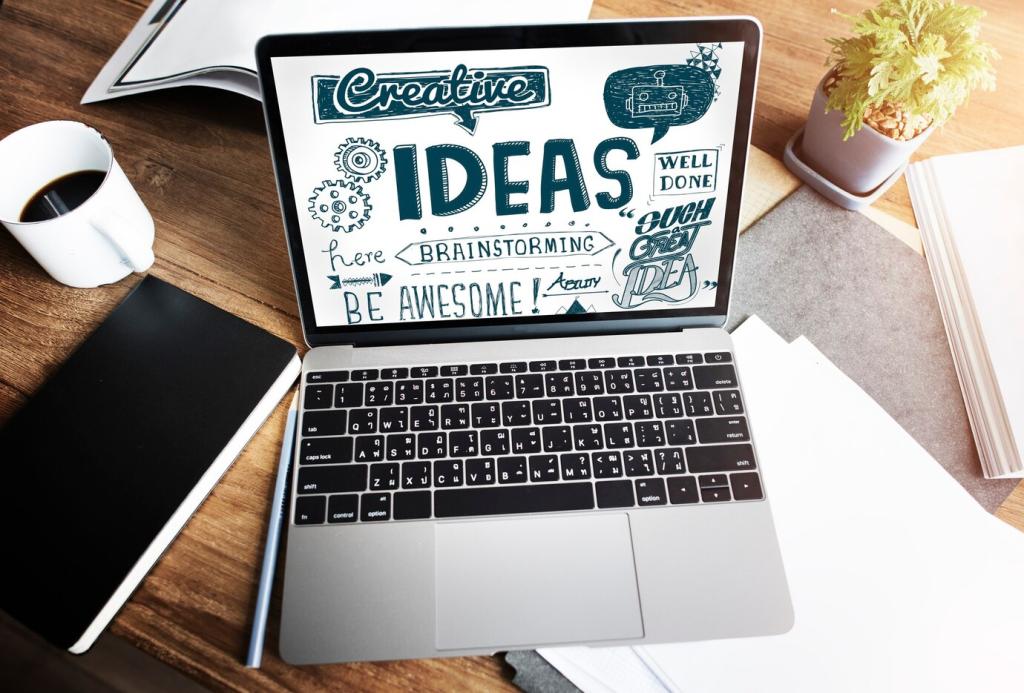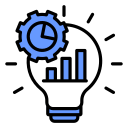Creative Ways to Enhance Home Office Productivity
Boosting productivity in a home office setting requires more than just motivation—it calls for creative adjustments that elevate work habits, enhance focus, and foster overall well-being. In today’s increasingly remote world, rethinking your workspace and daily routines can unlock new levels of efficiency and satisfaction. The following sections explore innovative, practical strategies designed to help anyone turn their home office into a powerhouse of productivity, regardless of space, distractions, or varying work styles.

Designing an Inspiring Workspace
Embracing Natural Light
Natural light not only increases alertness but also improves mood, making it a foundational element of an effective home office setup. Positioning your desk near a window helps you harness the benefits of changing light throughout the day, reducing eye strain and fostering a sense of connection with the outside world. Even if your space is limited, utilizing sheer curtains or strategically placed mirrors can maximize the flow of daylight. Studies have shown that exposure to natural light boosts serotonin levels, which can translate to better focus and a more positive workday, giving you the extra edge needed to thrive in a home-based setting.
Personalized Décor Touches
Integrating personal and meaningful décor transforms your workspace from a generic desk into a motivating haven. This could be as simple as artwork that inspires you, a vision board of your goals, or cherished objects that make your space uniquely yours. When your environment reflects your personality, it can subtly reinforce your motivation and sense of ownership over your work. The psychological impact of these touches can translate into a greater sense of comfort and belonging, making tasks feel less burdensome and more engaging, which in turn leads to higher productivity.
Ergonomics and Comfort
Comfort is the cornerstone of sustained productivity. Investing in ergonomic furniture, such as an adjustable chair and a desk at the proper height, prevents fatigue and reduces the risk of long-term health issues. Ergonomics goes beyond just the chair—it also includes keyboard placement, monitor height, and even the floor support under your feet. By optimizing your workstation for your body, you can minimize discomfort and physical distractions, allowing you to sustain longer periods of focused work and maintain higher quality outputs.
Previous
Next
Setting Boundaries and Finding Balance
Visual cues signal both to yourself and those you live with that you are in work mode. This could range from wearing dedicated work attire—even if casual—to using specific lighting or a desk sign. Such cues ritualize the beginning and end of your workday, helping you mentally transition in and out of work mode. Over time, these signals reinforce a routine that trains your brain to focus during set periods, reducing distractions and elevating overall productivity.
Leveraging Technology for Efficiency
Many work processes involve repetitive steps that consume time and mental energy. Employing automation tools—like email filters, digital schedulers, and workflow apps—can handle these tasks quietly in the background. For instance, you can schedule emails to send automatically or use task management apps to generate recurring to-do lists. By reducing the volume of rote tasks you handle manually, you free up mental bandwidth to focus on creative, mission-critical work.
Embracing Mindful Breaks
The Power of Microbreaks
Microbreaks—short pauses that may last a few minutes—can have an outsized impact on focus and well-being when utilized throughout the day. These small interludes could involve stretching, taking a few deep breaths, or simply gazing out the window. By deliberately inserting such pauses into your schedule, you interrupt mental fatigue and allow your brain the opportunity to reset. Over time, these cumulative breaks improve both the quality and consistency of your work performance.
Intentional Movement
Physical movement is a potent antidote to the sedentary nature of desk work. Instead of viewing activity as a disruption, build intentional movement into your routine, such as standing up for phone calls, practicing a quick yoga sequence, or walking around during breaks. Movement stimulates circulation, enhances cognitive function, and helps dissipate stress. By making movement non-negotiable, you support your body and mind in functioning at optimal levels, fostering sustained productivity.
Mindfulness for Focus Reset
Mindfulness practices, such as meditation or deep breathing, can be powerful tools to rekindle focus and manage work-related stress. Taking five minutes to center yourself—perhaps using guided meditation apps or simply focusing on your breath—serves as a mini-reset amid a busy workday. These pauses not only alleviate tension but also sharpen your attention, making it easier to return to complex tasks with renewed clarity and vigor.
Regularly sharing your goals with a friend, colleague, or even a virtual group adds an element of external commitment. When others are aware of your objectives, you become naturally more invested in following through. This sense of shared awareness provides gentle social pressure, as well as support or advice when you encounter obstacles, making your path to achievement clearer and more purposeful.

Creative Warm-Up Rituals
Starting your day with a creative warm-up—a short journaling session, sketching, or brainstorming new ideas—sets a positive, innovative tone. These activities prime your mind for problem-solving and outside-the-box thinking throughout the day. It’s about building momentum and signaling to your brain that this is a space for invention, not just routine administration. Over time, these rituals become powerful triggers for flow and productivity.
Mixing Up Task Sequences
Following the same pattern every day can dull your focus. By intentionally changing the order or approach to tasks, you keep your mind engaged and avoid the mental drift that comes with predictability. One day you might tackle your most challenging work first, the next you may alternate between big and small tasks. This variety challenges your brain, enhances adaptability, and can lead to unexpected bursts of creativity or insight.
Promoting Playfulness in Problem Solving
Inviting a playful mindset into your problem-solving arsenal enhances innovation and reduces stress. This could include using mind-mapping tools, allowing time for “blue sky” thinking, or gamifying your to-do list to make progress more satisfying. Approaching challenges with curiosity and a sense of play transforms obstacles into opportunities and infuses even repetitive work with a sense of enjoyment and discovery.
Connecting with the Broader Community
Virtual Collaboration Spaces
Regularly participating in virtual coworking sessions or collaboration platforms helps simulate the communal energy of a traditional office. Setting aside specific times to work “together” via video calls, shared documents, or group chats allows for the spontaneous exchange of ideas, feedback, and support. These collaborative moments foster a sense of belonging and give you a much-needed outlet for problem-solving with others, keeping you engaged and accountable.
Professional Communities and Forums
Actively engaging with professional groups, online forums, or specialized communities opens doors to new knowledge, trends, and skill-sharing opportunities. Whether it’s contributing to discussions, asking for advice, or attending virtual meetups, these interactions extend your network, broaden your perspective, and often introduce fresh approaches to common challenges, all of which can invigorate your daily workflow.
Peer Learning and Mentorship
Seeking mentors or offering yourself as a peer-mentor adds a rich dimension to your professional growth. Regular check-ins, skill exchanges, and constructive feedback sessions provide motivation and keep you intellectually challenged. This ongoing exchange cultivates a dynamic learning environment, encourages the development of new competencies, and deepens your connection to your field despite the remote setting.
